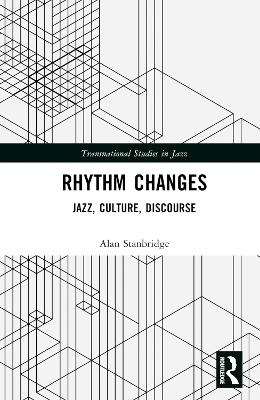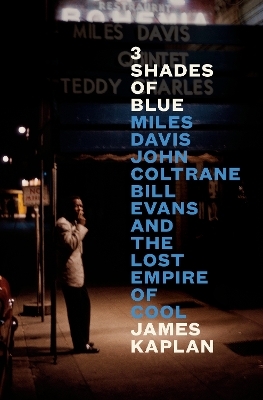
Rhythm Changes
Routledge (Verlag)
978-1-032-25189-9 (ISBN)
Perhaps the most striking and distinctive aspect of the book is the extraordinary eclecticism of the wide-ranging but carefully chosen case studies and examples referenced throughout the text, from nineteenth century literature, through 1930s Broadway and film, to twentieth and twenty-first century jazz and popular music.
ALAN STANBRIDGE is an Associate Professor in Music and Culture at the University of Toronto, Canada
Introduction: The Persistence of Authenticity
1. The Challenge of the Past: Jazz, Parody, and Jazz Discourse
They Brainwash and Teach You Hate: From Parody to Protest
It Ain’t Necessarily So: From Caricature to Celebration
In a Sentimental Mood: From Ridicule to Romanticism
Notes
2. A Few of My Favorite Things: Analyzing Jazz, Interpreting Irony, Assessing Value
"Saying Something": Coltrane, Irony, and ‘My Favorite Things’
"White Things," Black Things, and a Few Other Things
"Undeniable Qualities": Homage, Value-For, and Ideological Hegemony
"Myriad Subtleties," Bebop Parody, and the Question of Context
"We’re in the Money": Irony, Complexity, and Social Normativity
Notes
3. My Only Sunshine: Jazz, Country Music, George Russell, and Musical Meaning
Way Out West: From Cowhand Sonny to Dangerous Davey
Cowboy Favorites: Jazz Meets Country Music
You Are My Sunshine: From Singing Cowboys to Gassed Soulsters
Happy Endings: George Russell Meets ‘You Are My Sunshine’
Sunshine Redux: From Kiddies Songs to Kitchen Appliances
Notes
4. Divine Revelations: Keith Jarrett, Acoustic Authenticity, and Romantic Genius
Fun With Toys: Miles, Electricity, and Acoustic Relief
A Blazing Forth of a Divine Will: Blank Slates, Claptrap, and Emphysemic Goats
Body and Soul: Sacred Space, the State of Grace, and Everyday Ecstasy
Blessed With Genius: The Flame Itself, the Man from Porlock, and the Heavenly Ostrich
Play On, Play On: Robert Bly, the Wild Man, and the Neglected Male Psyche
Touch the Soil: Elemental Instruments, Indian Country, and the Noble Savage
Notes
5. The Body Electric: Music, Machines, and Mechanical Reproduction
I Sing the Body Electric: Aesthetic Materialism, Technological Humanism, and Electrical Grandmothers
Spark of Being: Frankenstein, Electricity, and the Merging of Text and Form
Undervaluing Overdubbing: Jazz, Spontaneity, and Recording Studio Trickery
Essential and Divine: Faithful Fidelity, Analogue Authenticity, and "exactly what was played"
Preserving Spontaneity: Free Improvisation, Live Performance, and the Paradox of Sound Recording
Notes
6. Can Blue Men Sing the Whites? African American Exceptionalism, European Stereotypes, and the Jazz Studies Debate
Getting To Know You: The ‘Afrological,’ the ‘Eurological,’ and the Illogical
The Anxiety of Affluence: Race, Class, and European ‘Privilege’
A Pan-European Conspiracy? Cultural Nationalism, Nativist Politics, and Foreign Competitors
The Emancipation Problem: African American Models and German Belligerents
A Delicate, Nuanced Approach? Humour, Improvisation, and Composer-Centred Music
Networks of Power: Whiteness, Erasure, and World Harmony
Postscript: Say It Loud, I’m British and I’m Proud
Notes
References
Discography
Filmography
| Erscheinungsdatum | 13.03.2023 |
|---|---|
| Reihe/Serie | Transnational Studies in Jazz |
| Zusatzinfo | 28 Halftones, black and white; 28 Illustrations, black and white |
| Verlagsort | London |
| Sprache | englisch |
| Maße | 152 x 229 mm |
| Gewicht | 857 g |
| Themenwelt | Kunst / Musik / Theater ► Musik ► Jazz / Blues |
| Kunst / Musik / Theater ► Musik ► Musiktheorie / Musiklehre | |
| Kunst / Musik / Theater ► Musik ► Pop / Rock | |
| Sozialwissenschaften | |
| ISBN-10 | 1-032-25189-1 / 1032251891 |
| ISBN-13 | 978-1-032-25189-9 / 9781032251899 |
| Zustand | Neuware |
| Informationen gemäß Produktsicherheitsverordnung (GPSR) | |
| Haben Sie eine Frage zum Produkt? |
aus dem Bereich


